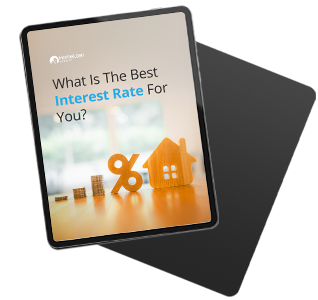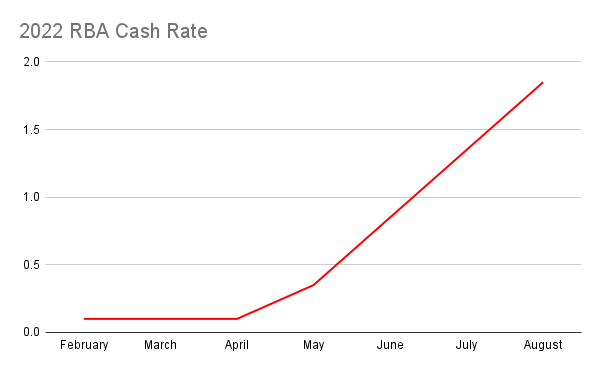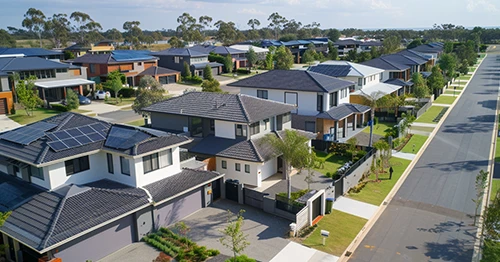Updated: 23 Dec, 2024
This week, the Reserve Bank of Australia announced its fourth straight monthly increase in the cash rate, and more rate hikes are almost certainly imminent.
As of August 2022, the cash rate target is 1.85%.
What Happens When Interest Rates Rise?
The cash rate rise directly affects the variable interest rate on your home loan. When the cash rate goes up, the cost of funding goes up for the bank and they typically pass on that extra expense, directly to their customers.
It’s up to the lender how much of the rate rise they pass on, but for most it’s usually the full rate rise; for example, if your variable rate is 3.5% and the case rate goes up by 0.5 percentage points (also known as 50 basis points), your lender will probably raise your interest rate to 4.0%. Fixed-interest loans will not be affected.
As with the other cash rate increases this year, the big four banks have already decided to pass on the August cash rate rise to their customers in full:
- ANZ: 0.50 percentage points, effective from 12 August 2022
- CBA: 0.50 percentage points, effective from 12 August 2022
- NAB: 0.50 percentage points, effective from 18 August 2022
- Westpac: 0.50 percentage points, effective from 18 August 2022
How Much Will My Repayments Rise?
To help you understand how the rising interest rate environment will affect you, we did the maths on how a 0.5-point interest rate increase will affect your repayments monthly, annually and over the life of your loan.
How A 0.5-Point Increase Affects Your Monthly Repayments
| Loan Amount ($) | $500,000 | $800,000 | $1,000,000 |
|---|---|---|---|
| Monthly Repayment @ 2% interest | $1,848 | $2,957 | $3,696 |
| Monthly Repayment @ 2.5% interest | $1,976 | $3,161 | $3,951 |
| Monthly Repayment @ 3% interest | $2,108 | $3,373 | $4,216 |
| Monthly Repayment @ 3.5% interest | $2,245 | $3,592 | $4,490 |
| Monthly Repayment @ 4% interest | $2,387 | $3,819 | $4,774 |
| Monthly Repayment @ 4.5% interest | $2,533 | $4,053 | $5,067 |
| Monthly Repayment @ 5% interest | $2,684 | $4,295 | $5,368 |
Which Interest Rate To Settle For?
Your Guide To Finding The Interest Rate That’s Your Best Match

Disclaimer: Over the next few days, you’ll receive additional guides to help you on your homebuying journey. Occasionally, you’ll receive carefully curated home-buying tips, offers & schemes, and news articles. You can unsubscribe any time you want. View our Privacy Policy
How A 0.5-Point Increase Affects The Interest Paid Annually
| Loan Amount ($) | $500,000 | $800,000 | $1,000,000 |
|---|---|---|---|
| Annual Repayment @ 2% interest | $22,176 | $35,484 | $44,352 |
| Annual Repayment @ 2.5% interest | $23,712 | $37,932 | $47,412 |
| Annual Repayment @ 3% interest | $25,296 | $40,476 | $50,592 |
| Annual Repayment @ 3.5% interest | $26,940 | $43,104 | $53,880 |
| Annual Repayment @ 4% interest | $28,644 | $45,828 | $57,288 |
| Annual Repayment @ 4.5% interest | $30,396 | $48,636 | $60,804 |
| Annual Repayment @ 5% interest | $32,208 | $51,540 | $64,416 |
How A 0.5-Point Increase Affects The Interest Paid Over The Life of the Loan
| Loan Amount ($) | $500,000 | $800,000 | $1,000,000 |
|---|---|---|---|
| Total Repayment over 30 years @ 2% interest | $665,315 | $1,064,504 | $1,330,630 |
| Total Repayment over 30 years @ 2.5% interest | $711,218 | $1,137,948 | $1,422,435 |
| Total Repayment over 30 years @ 3% interest | $758,887 | $1,214,220 | $1,517,775 |
| Total Repayment over 30 years @ 3.5% interest | $808,280 | $1,293,249 | $1,616,561 |
| Total Repayment over 30 years @ 4% interest | $859,348 | $1,374,956 | $1,718,695 |
| Total Repayment over 30 years @ 4.5% interest | $912,034 | $1,459,254 | $1,824,067 |
| Total Repayment over 30 years @ 5% interest | $966,279 | $1,546,046 | $1,932,558 |
As you can see, when your variable rates increase, it also increases the repayment on your home loan.
From the table, a borrower with a $500,000 home loan will make a total repayment of $665,315 for 30 years at an interest rate of 2%. The same borrower will make a total repayment of $966,279 for 30 years at an interest rate of 5%, which is a staggering $300,964 difference.
What This Means For You
Lenders usually add a buffer to their advertised interest rates when assessing potential borrowers, to make sure they can comfortably make repayments, even if their interest rate goes up. So most borrowers should be able to make the higher repayments.
Nevertheless, when interest rates go up, existing homeowners should review the terms of their loan and compare their options to see if their deal is still competitive. There are several moves a borrower can make when rates are on the rise:
- You can refinance your home loan to get a more competitive rate
- You can seek a pricing discount with your current lender
- Reduce your discretionary spending
- If you cannot keep up with increased repayments, inform your lender or mortgage broker immediately.
Higher repayments tell only part of the story of the impact of rising interest rates. They also reduce the borrowing power of potential homeowners, because they are assessed based on higher interest rates and, therefore, higher potential repayments.
Let Our Brokers Help You Get The Best Deal
New borrowers and current homeowners should take the help of one of our expert mortgage brokers when navigating the rising rate environment. For new potential homebuyers, a mortgage broker will work out your borrowing power and help get your home loan approved. For existing homeowners, our brokers will compare lenders and negotiate to make sure you have the best deal you can get.
We’re here to help. Call us on 1300 889 743 or enquire online.






